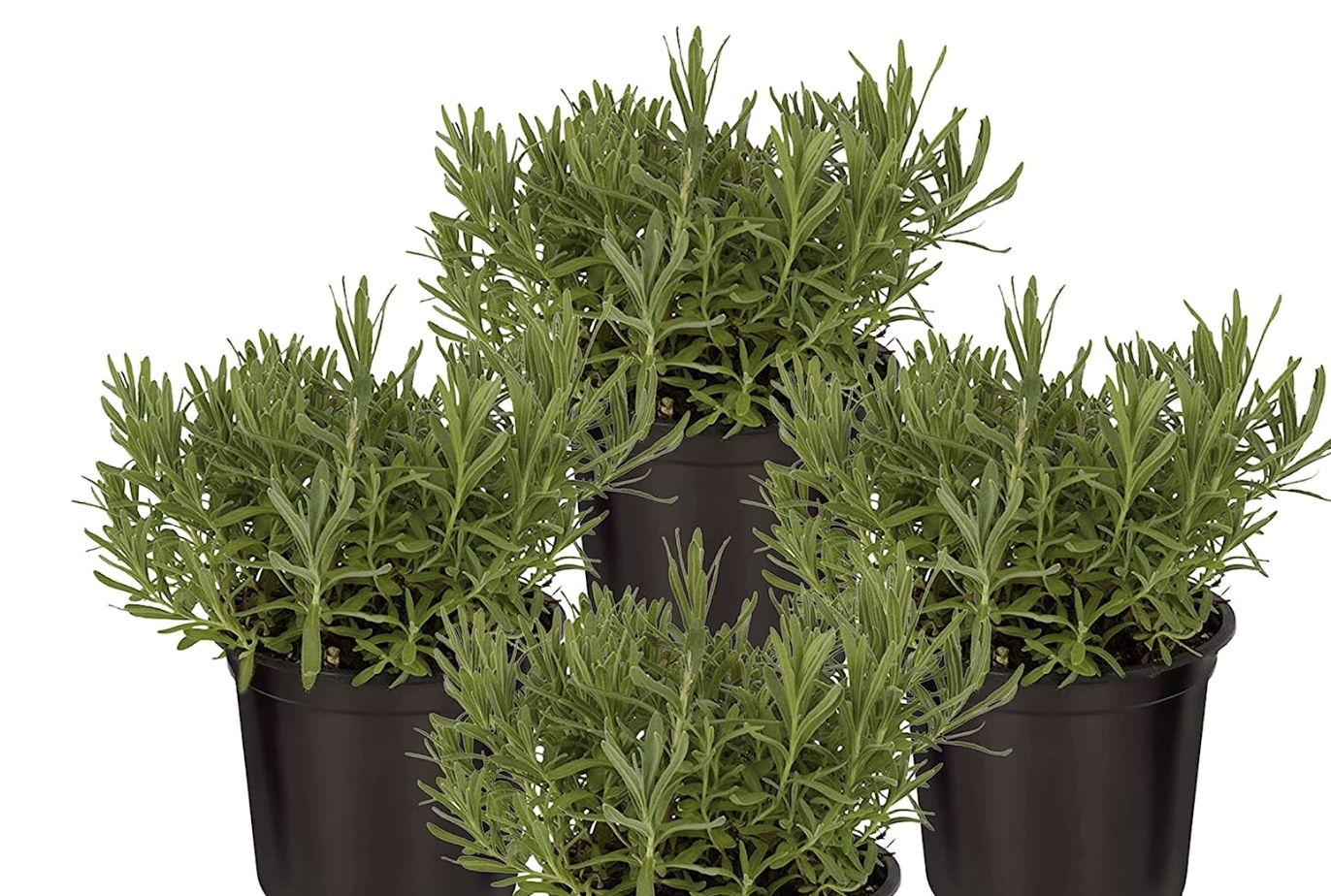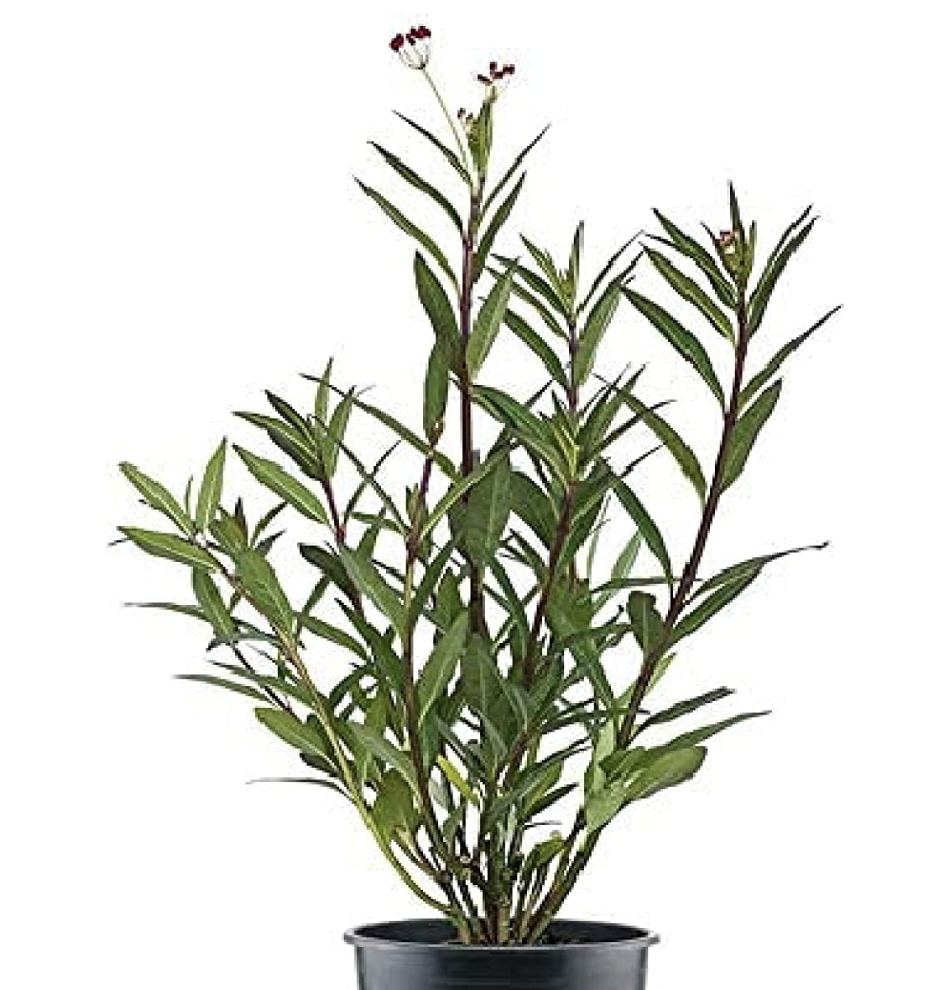How to start a butterfly garden and create a space that looks and feels more beautiful in 6 easy steps
Want to make your backyard a beautiful butterfly haven? Backyard design experts explain the little steps that can make a big difference in getting these beneficial creatures to stop by
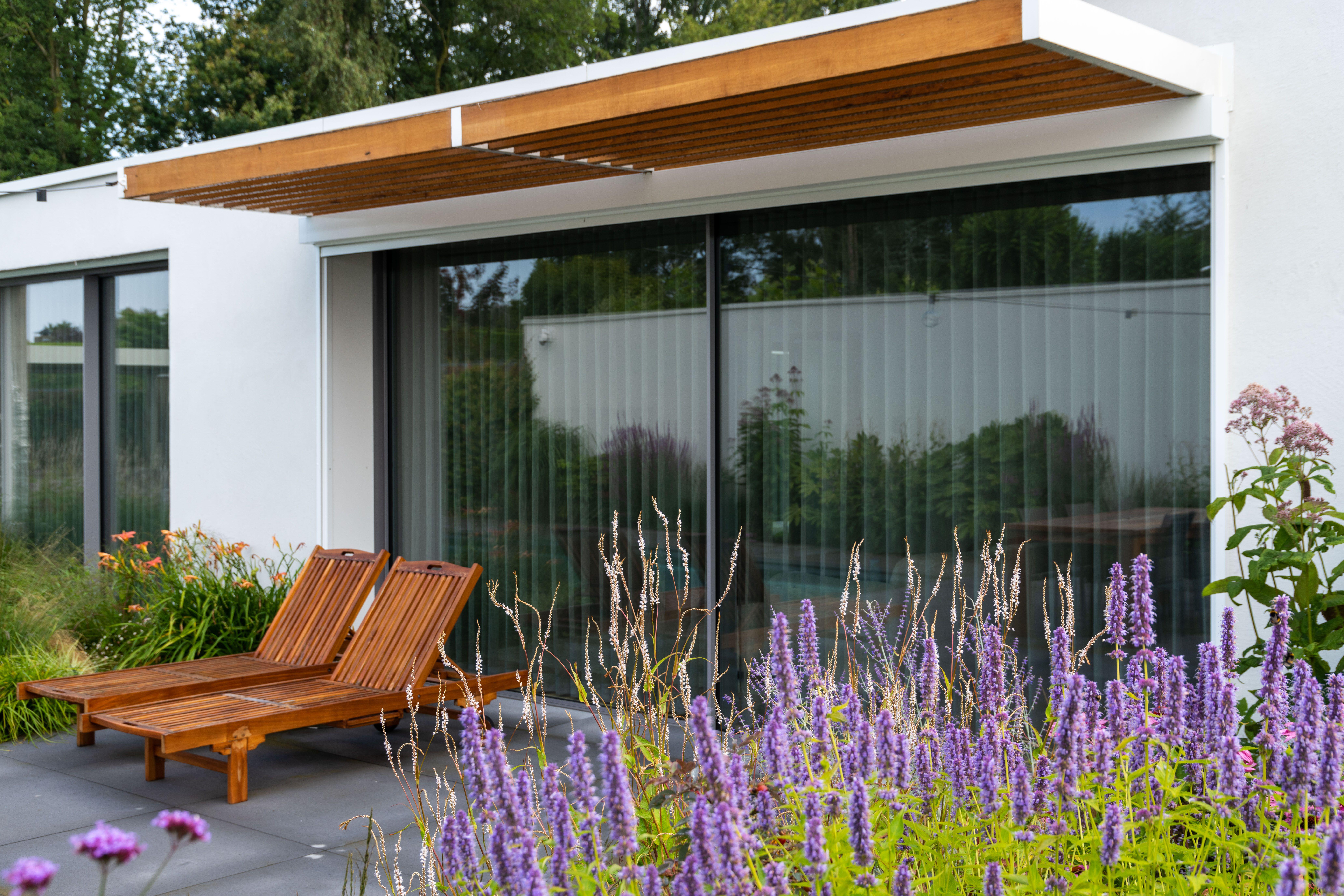
A backyard that attracts colorful, fluttering butterflies isn't only beautiful to observe. It's beneficial to the plants, trees, shrubs and anything else that grows there.
Along with their beauty, butterflies provide pollination, natural pest control and a food source for birds. Whatever you're growing in your garden, whether flowers, fruit or vegetables, butterflies contribute to its abundance and biodiversity.
With butterfly populations in serious decline across the globe – and the Migratory Monarch now on the IUCN Endangered Red List of Threatened Species – it's an important time to attract and support these pretty pollinators to your backyard.
Much of the issue is down to habitat loss, so knowing how to start a butterfly garden can encourage them to proliferate. Even a window box can provide food and shelter. The rewards are far-reaching, as well as relaxing and simply joyful.
How to start a butterfly garden
Designers and expert explain the plants and tricks you can use to bring buterflies to your yard.
1. Avoid pesticides
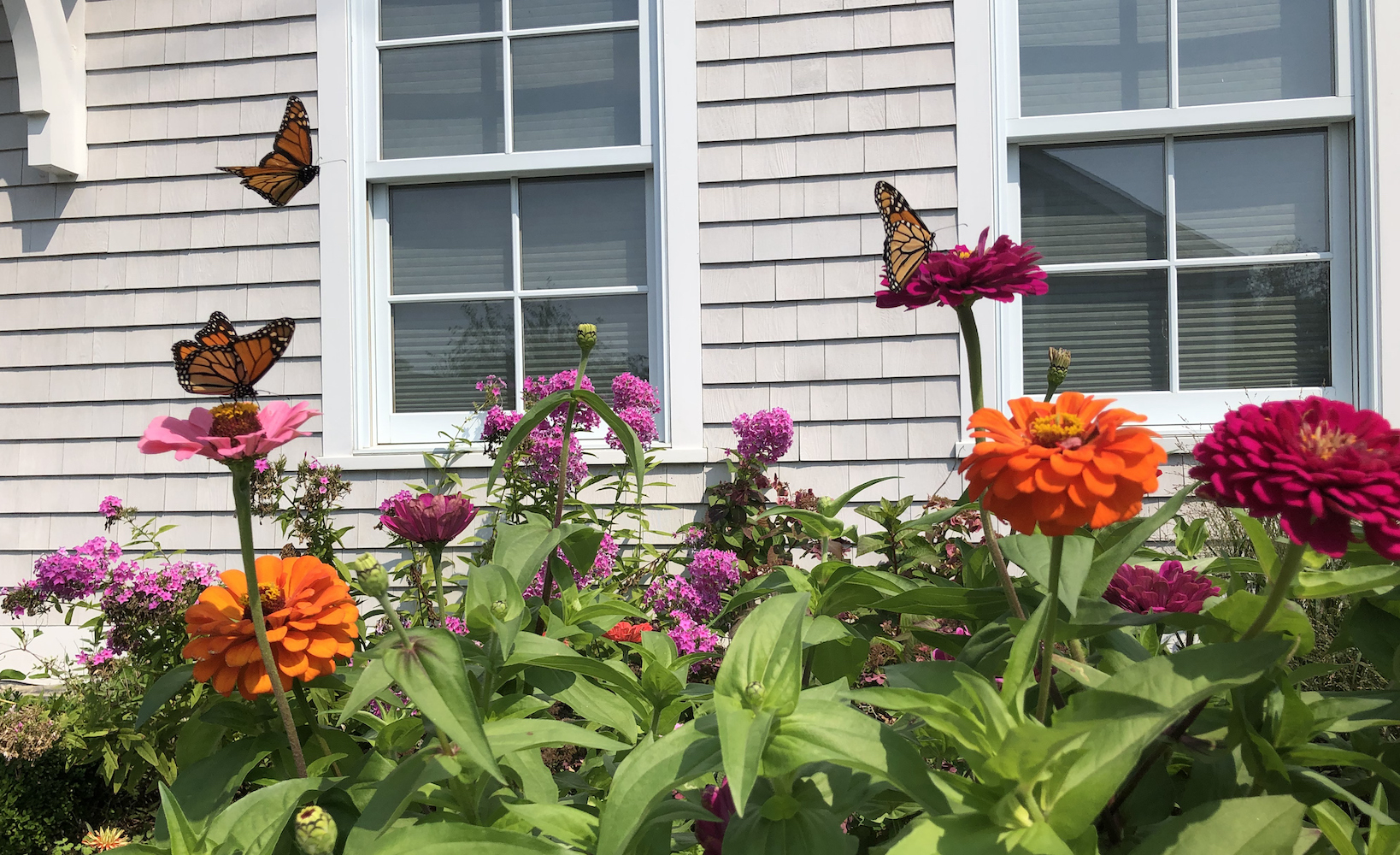
We can often be a little hasty in obliterating insects or averting potential infestations. However, pesticides, insecticides and toxic sprays will kill more than their intended target. Most of these chemicals will wipe out butterflies, bees and other pollinating insects too.
Avoid spraying pesticides near your flowers (or anywhere), or using herbicides on your lawn, if you want to attract butterflies (and other beneficial bugs) to your garden.
'Many pesticides are non-selective poisons that kill pests, benign species, and beneficial species indiscriminately,' says Susan Mulvihill, author of Vegetable Garden Pest Handbook.
'Some of these species lost to “friendly fire” may have even solved your pest problem for you. Even birds and other animals that eat pests can suffer as the insecticides make their food toxic or kill so much of it there’s not enough left.
'All kinds of bugs - both the good and the bad - play important roles in a healthy environment. Insecticides are some of the most problematic chemicals - for both our food and the environment - used in gardening. Even if you can determine the bugs you want from those you don't, a few pests are expected and even beneficial to your garden,' says Stephanie Rose, author of Garden Alchemy. 'Allowing small populations of pests in your garden creates a more balanced ecosystem. It's when they get out of control you may need to step in.' Check here for a list of the beneficial garden insects you want to encourage.
'If that's the case, make a homemade pest-be-gone spray, using fresh herbs, water and some soap, to allow the spray to adhere to leaves,' Stephanie adds. 'Garlic and red pepper are often ingredients in commercial natural deterrents for insects, birds and animals.'
2. Provide clusters of nectar-rich plants through the seasons
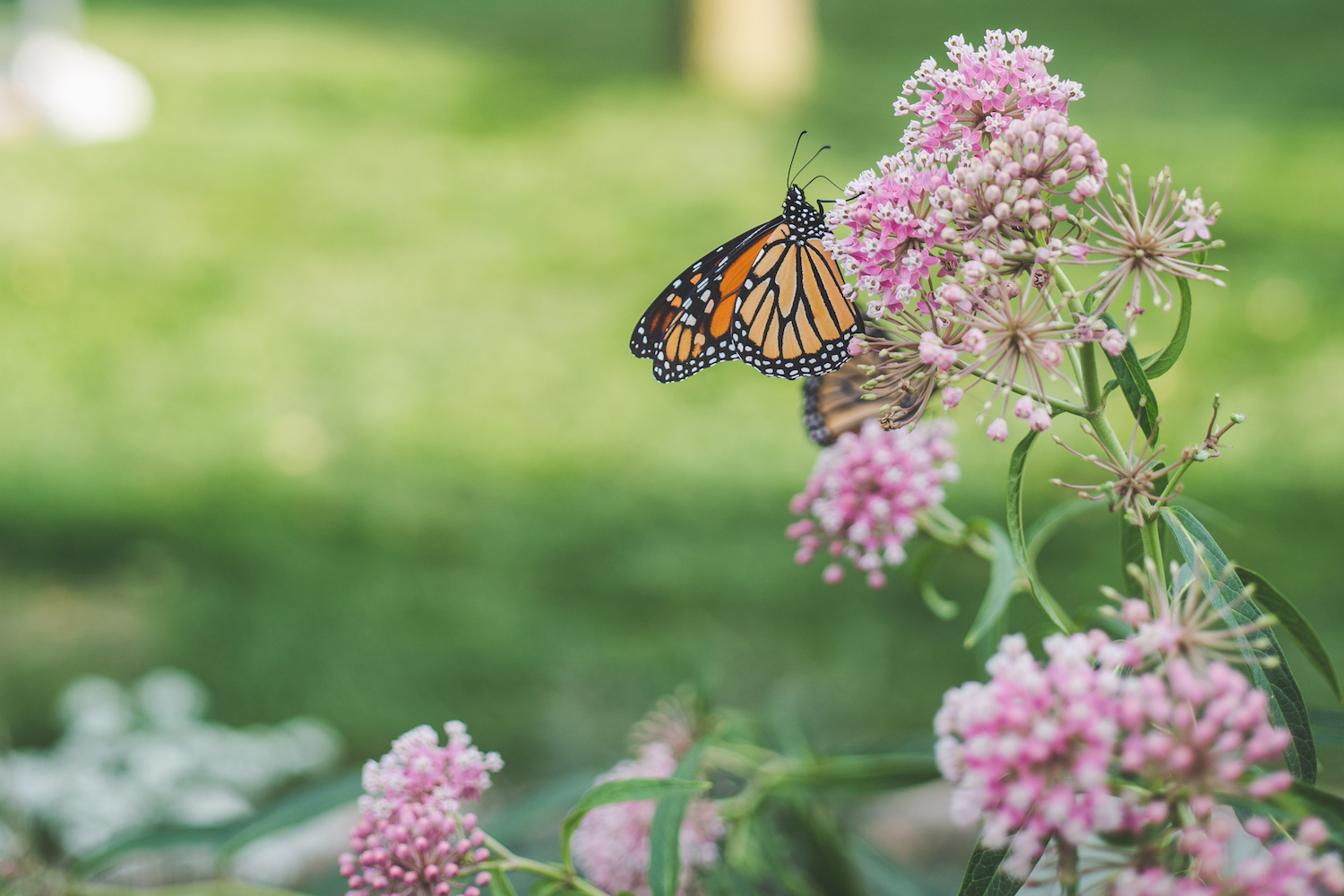
Altering your planting will attract butterflies. They will swoop into any garden if there are enough colorful, nectar-rich flowers for them to feed on.
'Adult butterflies and moths drink nectar through a straw-like mouthpart called a proboscis,' says horticulturalist, Jessica Walliser, author of Attracting Beneficial Bugs. 'As caterpillars they chomp leaves or other plant tissue. Their mouthparts determine which flowers the insects can access for nectar.'
Although butterflies and caterpillars prefer certain types of plant, what you grow and the butterfly species your garden attracts, will depend on where you live.
The North American Butterfly Association (NABA) encourages the planting of regionally native plants when developing habitats for butterflies. However, in general, some of the best plants to attract butterflies include Milkweeds, Cosmos, Dill, Oregano, Lavender, Wallflower and Verbena. Similar to many of the best flowers for bees, so a double-win.
Find out which butterflies inhabit your area and plant accordingly. Cosmos is great for attracting White Peacock's in Florida, but won't work so well in Wisconsin, where that particular species is less common.
NABA recommends planting at least three species for caterpillars and at least three nectar-rich sources for butterflies. Choose sunny sheltered spots for planting, as butterflies like warmth. They like to shelter under leaves when it's raining or windy too.
Stagger bloom times by ensuring a good mix of nectar sources across the seasons, with different flowers that blossom from spring, through summer and fall. This helps butterflies when they emerge from hibernation, when they're breeding and to build up their reserves before winter.
3. Allow suitable plant spacing
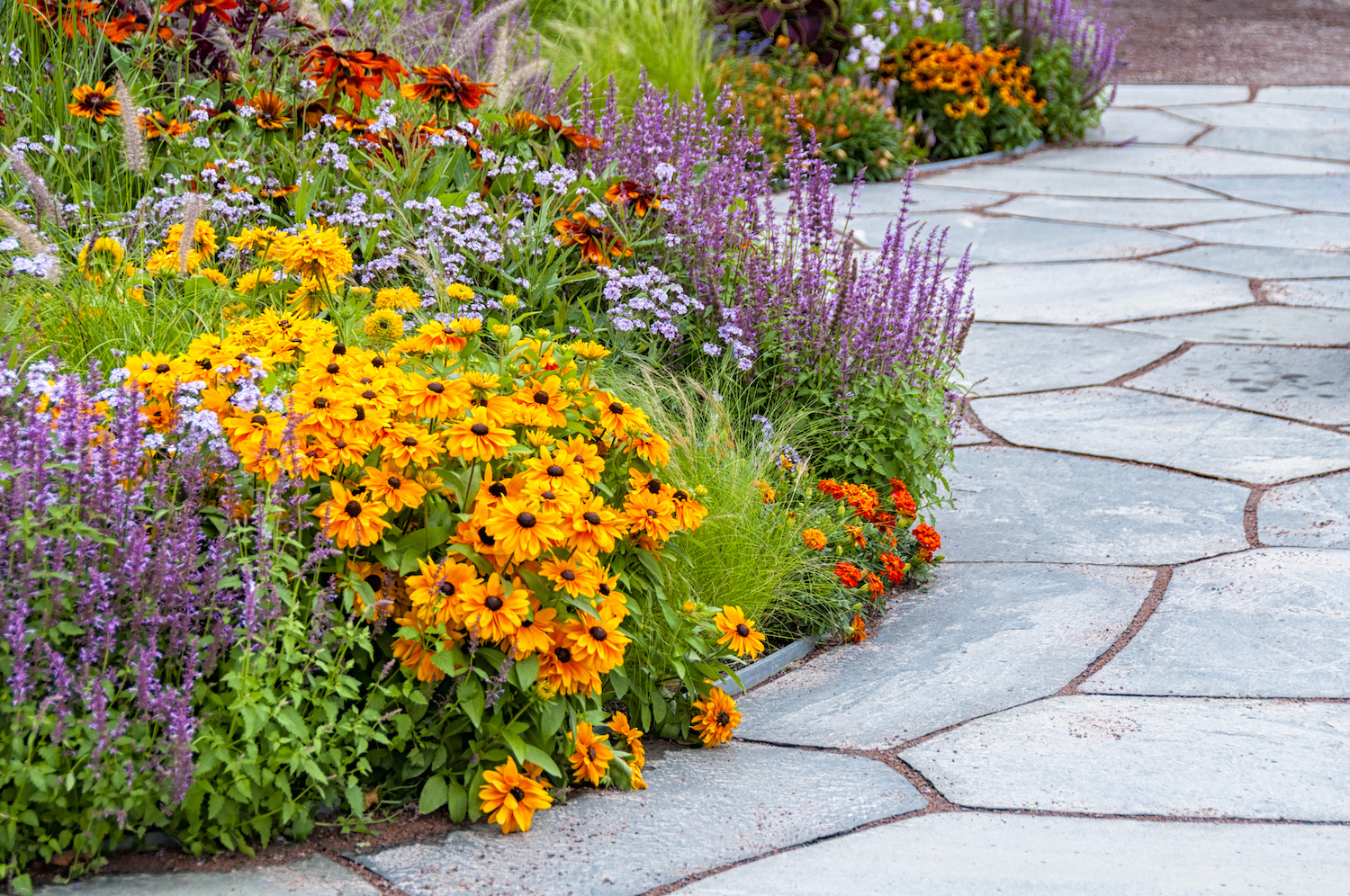
Butterflies (and other beneficial bugs) like to flit between flowers whilst feeding. So ensure they have room to do so with clusters of planting at different heights, spaced evenly apart.
'Suitable plant spacing is necessary, not only for the health of the plants, but also to facilitate insect movement,' says Jessica Walliser. 'Place plants too close together and they'll outcompete each other. Place them too far apart and natural enemies may have a hard time scooting from plant to plant to find food.
'Once I decide the number and types of plants I want to include, I buy them, then head to the garden to determine their placement. I place the plants, pot and all, then move around them as I see fit.
'In my mind, I visualize their mature size, flower structure, color at maturity, and work to pair them with neighbouring plants, in a way that appeals to my sense of aesthetics and beneficial bugs.'
4. Don't get too hung up on weeds

In recent decades weeding became an obsession for many gardeners, but garden trends have changed. Manicured landscapes are out and re-wilding is in. Along with a wilder style, there's also a new found love for some of those formerly pesky plants – weeds.
This is in part because scientific studies have shown how useful many weeds and wild flowers are for pollinators and the surrounding plants that benefit. For example, caterpillar larvae like to feed on nettles, ragwort and mixed grasses, while Monarchs, Skippers and many other butterflies will feed on thistles, clover and dandelions.
'Wiping out every weed in your landscape is not necessary or even good,' says Jessica Walliser. 'While plants that have been classified noxious or invasive weeds in particular regions should not be promoted, many plants that gardeners may consider weeds, do provide resources for beneficial insects.
'One study showed tent caterpillars and codling moths were eighteen times higher in orchards with flowering weedy undergrowth, than those with few weeds. The balance comes with picking your battles. Clover, speedwell, chickweed, and dandelions aren't necessarily the enemy.'
Butterfly charities suggest reducing the frequency of lawn mowing to once every three-four weeks to allow clover, daisies and dandelions to grow. Or leaving a patch of lawn to stay long, as caterpillars feed on grasses left to grow and they will eventually transform into butterflies. Check out how to care for a clover lawn.
5. Make a butterfly puddler
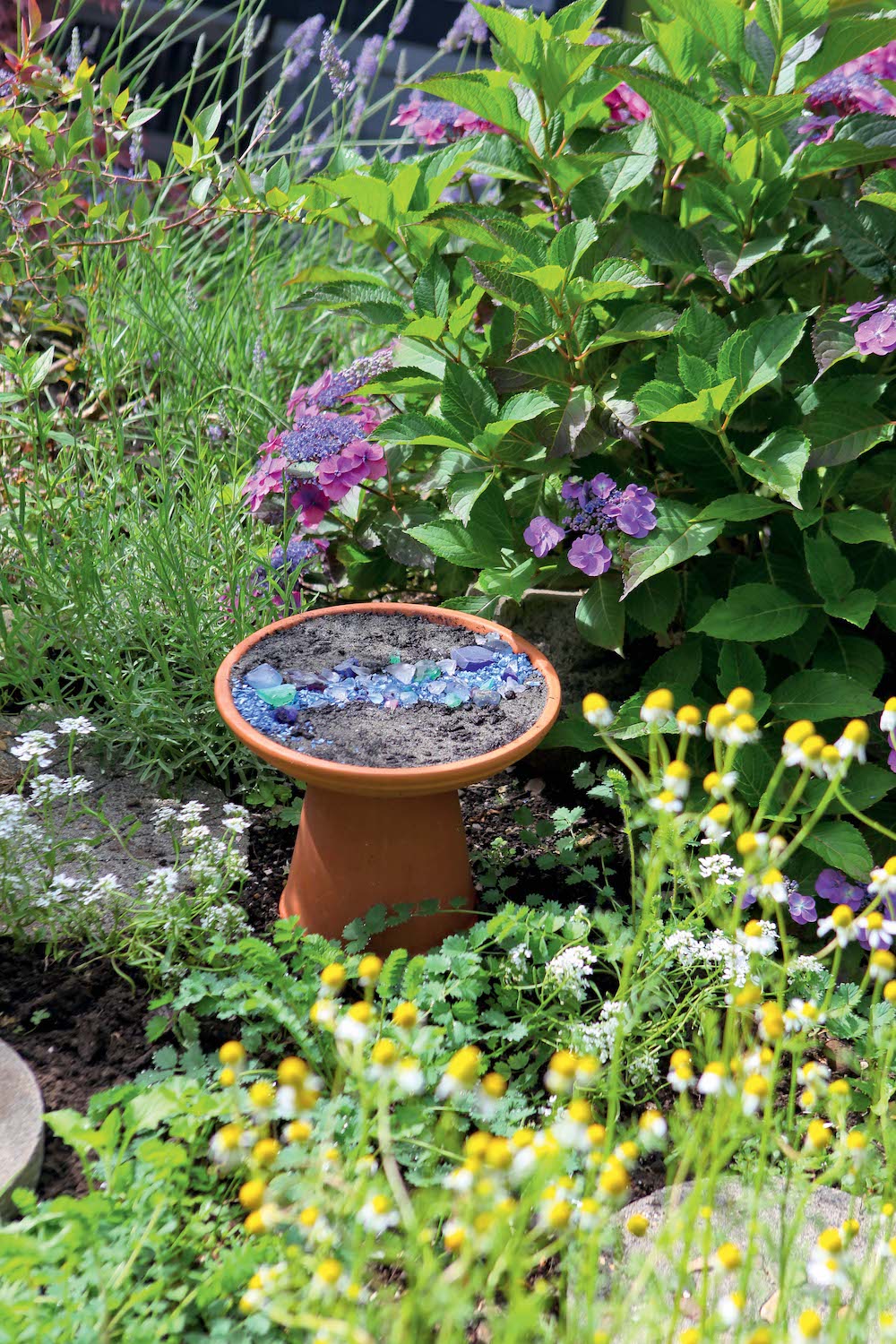
Butterflies need more than nectar to survive. They need shelter and places to breed, perch and recharge, whilst on the fly too. Stephanie Rose, author of Garden Alchemy suggests making a puddler to attract butterflies to your backyard and to help sustain them.
She made hers with a terracotta plant pot placed upside down with the drip tray balanced on top for the structure. Then filled it with sand, compost, stones and water.
'Butterflies and moths enjoy having a little mud puddle in the garden,' says Stephanie. 'This doesn't have to be a large area or complicated structure. Simply a spot for them to suck up some muddy water for a refreshing drink of minerals.
'Mix three parts sand with one part compost and add it to the drip tray. Make a 'river' shape through the sand with rocks and pebbles that sit just above it for butterflies to land. Add some water to make mud and set the puddler in the garden.
'Be sure to place the puddler in a sunny place location that is easily visible - you won't want to miss the fun from watching the show.
'Fill the water every few days, depending on the weather, or how quickly it evaporates. Each month empty the puddler, give it a wash with biodegradable dish soap and refresh the sand, compost and stones.'
6. Ditch peat-based compost
When buying potting mediums for plants, it's best to avoid peat-based compost. Peat bogs provide a habitat for butterflies and other insects and animals.
According to butterfly conservation charities, we can help preserves these rare habitats by avoiding peat-based compost and choosing the good alternatives available from garden centres.
The more butterflies there are in the wild, the more likely they are to visit our backyards.
Be The First To Know
The Livingetc newsletters are your inside source for what’s shaping interiors now - and what’s next. Discover trend forecasts, smart style ideas, and curated shopping inspiration that brings design to life. Subscribe today and stay ahead of the curve.
Jacky Parker is a London-based freelance journalist and content creator, specialising in interiors, travel and food. From buying guides and real home case studies to shopping and news pages, she produces a wide range of features for national magazines and SEO content for websites
A long-time contributor to Livingetc, as a member of the team, she regularly reports on the latest trends, speaking to experts and discovering the latest tips. Jacky has also written for other publications such as Homes and Gardens, Ideal Home, Red, Grand Designs, Sunday Times Style and AD, Country Homes and Interiors and ELLE Decoration.
-
 Turns Out the Coolest New Café is Actually In Your Kitchen — Here's How to Steal the Style of TikTok's Latest Trend
Turns Out the Coolest New Café is Actually In Your Kitchen — Here's How to Steal the Style of TikTok's Latest TrendGoodbye, over-priced lattes. Hello, home-brewed coffee with friends. TikTok's 'Home Cafe' trend brings stylish cafe culture into the comfort of your own home
By Devin Toolen Published
-
 5 Bathroom Layouts That Look Dated in 2025 — Plus the Alternatives Designers Use Instead for a More Contemporary Space
5 Bathroom Layouts That Look Dated in 2025 — Plus the Alternatives Designers Use Instead for a More Contemporary SpaceFor a bathroom that feels in line with the times, avoid these layouts and be more intentional with the placement and positioning of your features and fixtures
By Lilith Hudson Published
